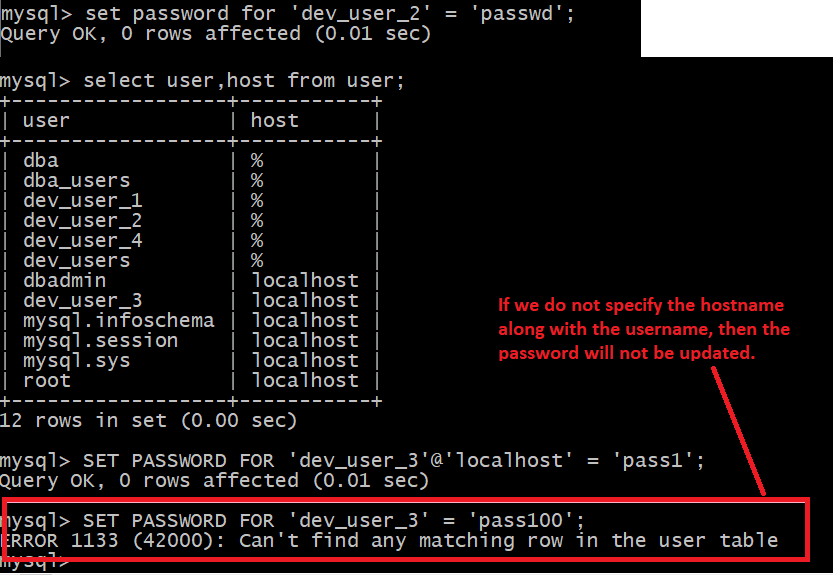
Centos 7 cli mysql change user password password#
What this command basically does is expire the password of the mentioned user, so that the user has to forcefully change the existing password at their next login. This is a very useful feature, especially for Linux administrators. Passwd: password expiry information Force a user to change their password To delete the password of a user, use the following syntax: sudo passwd -d This is not useful in most personal computers, but for a home PC, that’s what most people use, or for a system that needs to be open to anyone who attempts to use it, this option is essential. This option sets an account essentially password-less, so that anyone can log into it.

Number of days of warning before password expires : Deleting a password Maximum number of days between password change : 99999 Minimum number of days between password change : 0 There is another command that displays this information in a better way. -1 : Inactivity period (-1 means never).99999 : Password expiry maximum age (99999 basically means never).Pulkit P 0 99999 7 displayed properties are as follows: There are a lot of criteria and properties that a password may have, and these are the commands that can be used to view those: passwd -S Seeing the status of a password is also made easy in Linux. Passwd: password updated if you’re logged in with the “root” user you can just use the command without “sudo”. Therefore, the command becomes: sudo passwd You will need to know the administrator password. This requires root access, as only the root can add, remove or change the password of any other user on the system. Passwd: password updated Changing the password of another user The passwords aren’t shown in the terminal, so that they are not visible to any person that might be around the system. This will open up a prompt asking for the current password, and then the new password, and its repeated confirmation. Just open up the command line, and type in: passwd This is how you can change the password of the user you’re logged in with.

The password of the user itself can be changed using the passwd command provided by Linux. We have discussed some of these useful options below: Because of these reasons, Linux provides a wide range of options for user account password management. This is mostly done by the users themselves, but often, they have to be overridden by the administrator to control any illegitimate activity by any of the users. The passwords for user accounts often need to be changed.


 0 kommentar(er)
0 kommentar(er)
